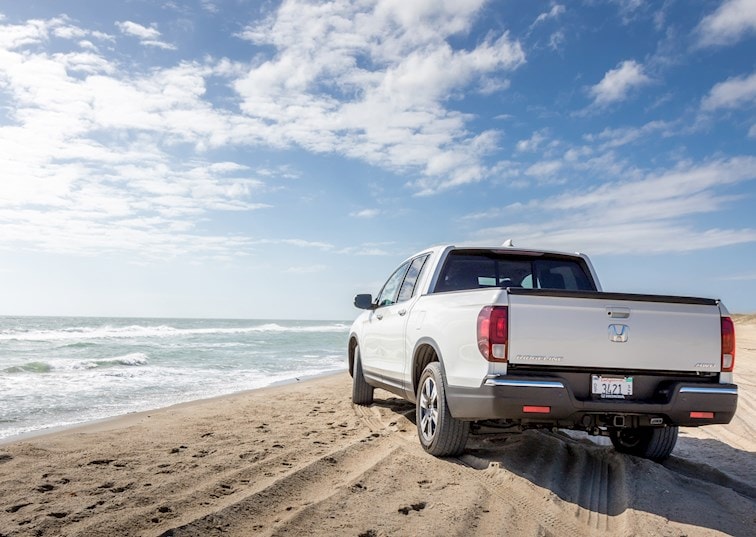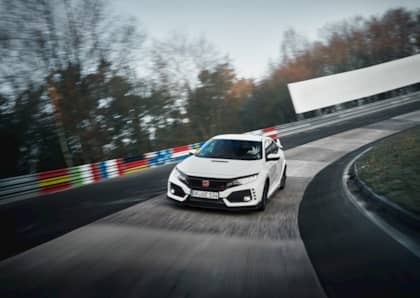Truck Enough? The 2018 Honda Ridgeline Review
As the maker of everything from cars and lawnmowers to motorcycles and generators, Honda has built its reputation on reliability. Having such a diverse portfolio, it only made sense to step into the truck world with the Ridgeline in 2005. However, it wouldn’t be until 2017 that Honda would double down on its successful midsized pickup and create the second generation Ridgeline you see here today. Given that it’s the only midsized pickup in its class without body-on-frame construction and fit with a fully independent suspension, it may have you scoffing at its truck designation.
However, once you realize the Ridgeline is capable of hauling nearly 1,500 pounds of payload, towing 5,000 pounds, and logging 25 mpg, it doesn’t sound so bad. Sure, there’s no two-speed transfer case, so a low range option is off the table, but that doesn’t mean the AWD version of the truck isn’t capable off-road. Recently, we spent over 2,000 miles testing the all-new 2018 Ridgeline in an RTL-E AWD trim. Coming in at just over $42,000 as-tested, the Ridgeline RTL-E is at the premium end of the model line, with the base 2WD version starting at $29,630.
While you can learn more in the video above, we’re diving even further into the details in our First Drive review below.

Powered by Earth Dream technology. While that may sound like your truck runs on Unicorn tears, it’s part of Honda’s latest line of direct-injected V-Tec gasoline engines. The 280 horsepower 3.5L V6 is paired to a six-speed automatic transmission. This setup delivers 262 lb-ft of torque, while allowing the Ridgeline to post an EPA rated 18 city/25 highway fuel economy numbers. Over the course of our adventures, we managed to see as high as 28 mpg and dropped down to 19 on our city/off-road adventure portion. Over the 2,000 miles, we averaged an impressive 23 mpg.

Inside, nearly every touchpoint is padded. This creates an incredibly sophisticated cabin, one more commonly found on a high-end SUV. Our model was equipped with plenty of modern conveniences such as a proximity key, dual climate control, and Honda Link and touch-screen navigation. While the Nav system takes a little getting used to, it becomes very intuitive with use. Maybe our only grip is how easily the navigation screen would smudge with fingerprints.

While the Ridgeline continues its unibody construction, the underpinning are shared with the all-new Honda Pilot, not the Odyssey. The biggest styling cue of the redesign can be found outback. A more rigid and separate appearing cabin creates a familiar truck look. Currently, Honda only offers the Ridgeline in a four door with no varying bed lengths.

Speaking of beds, the Ridgeline has a pretty unique one. Unlike its competitors who have more pronounced and space-robbing wheelwells, the Ridgeline offers a practically flat surface across the entire bed. At 60 inches wide and 64 inches long, it’s actually larger than the majority of its competitor’s short beds.

Another bonus? How about an extra lockable storage bin under the bed of the truck. It’s sealed and has a drain plug, making for an excellent tailgate party pickup. Speaking of which, you won’t have to lean far to access your bed cargo as the Ridgeline’s tailgate can be swung open like a car door, in addition to dropping down like a conventional truck. Honda also added a 150- to 400-watt AC power outlet out back and some weather proof speakers, so you can relax and recharge.

The fully independent suspension offers a car like ride that’s unmatched in the category. Although wheel travel is a bit more limited off-road, we were impressed at how poised and solid it felt off-road.

If you’re buying a truck, chances are, you’re looking to haul stuff in the bed. We didn’t get a chance to test out the Ridgeline’s max towing capacity, but we did load up the bed frequently with a range of heavy gear, parts and, yes, a fairly large roll of hay. The softer suspension definitely noticed heavier items quickly, but we never found it to upset the chassis on-road, nor did we get the nose to face skyward.

If you’re looking for the ultimate off-road capable midsized truck, this likely isn’t the one for you. That being said, we tested the AWD system in each of its mode offerings—Normal, Snow, Mud and Sand. Aside from dragging a little sand on the low-hanging valence, we were impressed with how the system adapted to each terrain setting. We found Sand the most effective for off-road adventures as it transferred the highest percentage of power to the rear wheels of the three modes and actuated an electronically controlled locking rear differential.

Paired with a more aggressive tire, (Ridge Grappler please), we think the Ridgeline could make for an excellent camping/exploration vehicle. It will be interesting to see how the aftermarket adapts to this generation Ridgeline, as it’s not without potential.

Our RTL-E model was fit with a host of safety features that nearly allowed the vehicle to drive itself. With adaptive cruise control, lane departure warning, blind spot warning, and a Collision Mitigation Braking System, the 5-Star crash rated Ridgeline has plenty of technology to keep you safe behind the wheel.

Driving from the coastal plains to the mountains taught us plenty about the power and comfort of the truck. The low stance of the Ridgeline kept it planted on twisty mounted roads, while the powertrain seemed to communicate well by finding the right gear when we needed it. Even after logging seven-plus hours at a time behind the wheel, we had no complaints of seat comfort.

One area we do have a few minor gripes about is the backseat. First, we wish the doors would open a bit more to allow for easier ingress and cargo loading. Second, there’s a floor runner designed to support the back seat when lowered that spans from side to side. We’d love to see this go away to allow for a nice flat floor to stack gear.

Without question, Honda took what it learned from the first gen Ridgeline and improved upon it greatly. Seeing the trucks side-by-side it’s easy to tell how far they’ve come from a styling and configuration perspective.

Truck Enough? We Say Yes!
It may seem blasphemous to some to even consider buying a truck that doesn’t have body-on-frame construction, but we think you should. Having driven a host of late-model midsized trucks, the Honda is by far the smoothest riding of the bunch. It’s easy get in and out of, load cargo, and nets excellent fuel economy for the segment. It also has arguably the best bed of any midsized truck and still touts enough towing and payload figures to satisfy a large share of the market. No, we wouldn’t take it over a Colorado ZR2 or Tacoma TRD Pro if our purpose was primarily off-road adventure. However, we would keep it on the table if light sand, snow, and the occasional hunting camp road is all you need to make it through. At the end of the day, we say the Ridgeline is very deserving of a test drive if you’re in the market for a new midsized pickup.












